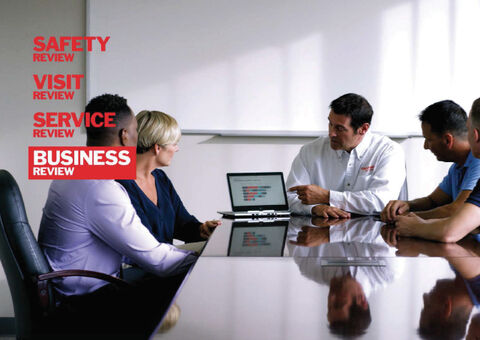Konecranes Portal
Konecranes Portal is your single point of access to our digital customer platforms for industrial crane maintenance information and TRUCONNECT data, plus our store for spare parts, accessories and manuals.
Konecranes Portal is your single point of access to our digital customer platforms for industrial crane maintenance information and TRUCONNECT data, plus our store for spare parts, accessories and manuals.
Our consultative approach can help guide your decision-making. We don’t just drop off a report on the way out. We take time to meet with you one-on-one and share our findings, provide recommendations based on our industry-leading expertise and discuss how each action impacts your operations and the entire health of your business.
Inspection and preventive maintenance services include several key consultations including:


Whenever a safety-related risk is detected, the inspector or technician will carry out a Safety Review with the customer before leaving the site or returning the equipment to operation.


At the completion of each service request, the inspector or technician will perform a Visit Review on site to share the insights of their inspection or maintenance findings, review the identified risks and improvement opportunities, and obtain decisions on recommended actions.


Within two business days, the local branch will follow up with a Service Review in person, online or by phone. We’ll go through open risk/recommendations and quotations to address them, answer the customer’s questions or concerns and document next steps. The service review will be performed using live data on yourKONECRANES.com.


Once a year or as needed, we’ll conduct a Business Review at our customer’s management level. This is an in-depth review of our service relationship -- looking at progress, feedback and documented value. We’ll discuss recommendations and plan jointly. The business review will be performed using live data on yourKONECRANES.com.
![]()
Indicates an unsafe condition. Failure to remedy such condition before continued operation of the identified asset may result in personal injury, including death, or property damage.
![]()
Indicates an inefficient condition. Failure to remedy such condition before continued operation of the identified asset may result in inefficient asset performance or an interruption in production.
![]()
Indicates that the condition could not be verified through visual inspection as a result of asset configuration and/or obstruction.
![]()
Indicates a potential opportunity to improve the safety, productivity, application or useful life of the asset. These suggestions are not necessarily tied to a particular fault.